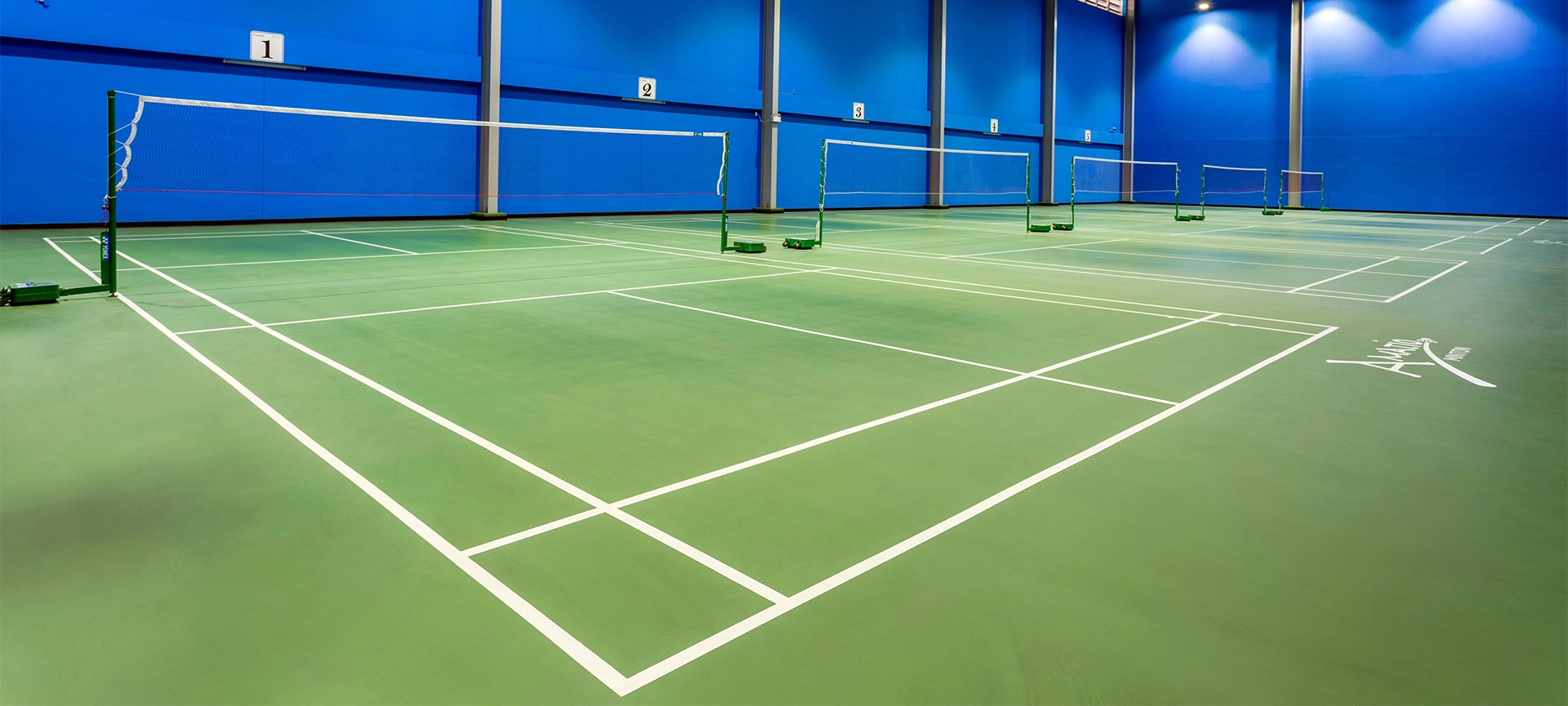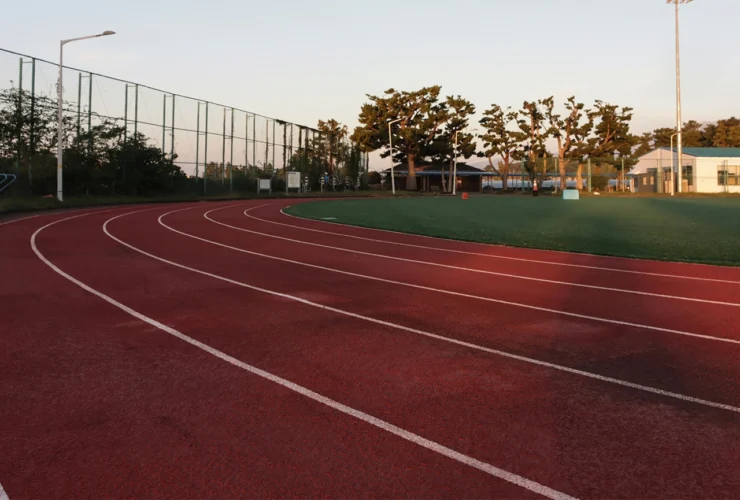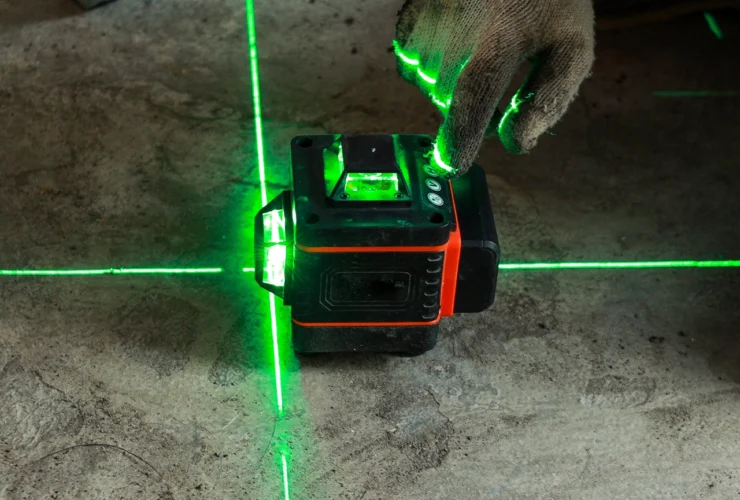Comparing Tennis Court Dimensions to Other Racket Sports: A Comprehensive Analysis
Tennis is a sport renowned for its elegance, precision, and athleticism. It’s played on a court with unique dimensions. However, in racket sports, tennis is just one player among many.
Each sport boasts its court dimensions, which significantly impact gameplay dynamics and strategy. For instance, the best tennis court dimensions differ between singles and doubles. In badminton, the dimensions are 44 feet (13.41 meters) in length and 20 feet (6.1 meters) in width for doubles play.
Wondering about the differences between tennis court dimensions and other racket sports? This blog delves into the dimensions of tennis courts and compares them with other popular racket sports, exploring how these variations influence the game.
Different Racket Sports Dimensions
While tennis courts offer expansive playing surfaces conducive to longer rallies, badminton, squash, and racquetball courts provide a more compact environment. Their more compact environment demands quick reflexes and precise shot-making.
Tennis Court Dimensions
Tennis courts are rectangular, with a net stretched across the center. The dimensions for singles play are 78 feet (23.77 meters) in length and 27 feet (8.23 meters) in width. However, the width extends for doubles play to 36 feet (10.97 meters).
The net stands 3 feet (0.91 meters) high at the center and tapers off to 3 feet, 6 inches (1.07 meters) at the posts.
Related Article: The Evolution Of Tennis Court Dimensions: From Past To Present
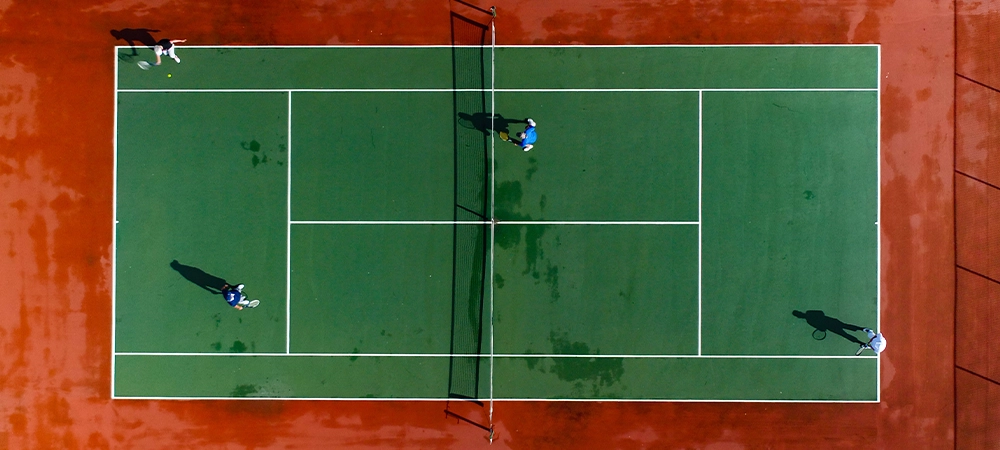
Badminton Court Dimensions
In contrast to tennis, badminton courts are much smaller in size. A badminton court is rectangular and divided into halves by a net. The dimensions are 44 feet (13.41 meters) in length and 20 feet (6.1 meters) in width for doubles play.
The width remains the same for singles play, but the length reduces to 17 feet (5.18 meters). The net stands 5 feet (1.55 meters) high at the center.
Squash Court Dimensions
Squash is played on a four-walled court, each with its unique dimensions. However, for international competitions, the court dimensions are standardized. A squash court measures 32 feet (9.75 meters) in length and 21 feet (6.4 meters) in width, with a height of 15 feet (4.57 meters). The service line is located 6.4 meters from the front wall.
Racquetball Court Dimensions
Racquetball courts closely resemble squash courts but are slightly larger. The standard dimensions for a racquetball court are 40 feet (12.19 meters) in length, 20 feet (6.1 meters) in width, and 20 feet (6.1 meters) in height. Like squash, racquetball utilizes a service line 20 feet from the front wall.
Comparison of Court Dimensions
When comparing the dimensions of tennis courts to those of other racket sports, several key differences emerge:
Size
- Tennis courts are significantly larger than badminton, squash, and racquetball courts. The expansive size of tennis courts allows for more extended rallies and strategic play.
- Badminton courts are the smallest among the four sports, reflecting the nature of the game, which emphasizes agility, speed, and rapid reflexes.
- Squash and racquetball courts fall between tennis and badminton courts in size, catering to both sports’ fast-paced, dynamic nature.
Court Layout
While tennis, badminton, and racquetball courts are rectangular, squash courts are characterized by their four-walled structure. This distinction significantly alters gameplay dynamics, as players must adapt their strategies to effectively utilize the unique court layout.
Net Height
- The net height varies across the different sports, with badminton featuring the highest net at 5 feet. This height reflects the shuttlecock’s flight trajectory and ensures challenging gameplay.
- Tennis, squash, and racquetball courts have lower nets, encouraging players to utilize power and precision to clear the net while maintaining accuracy.
Height of Surrounding Walls:
Squash and racquetball courts feature surrounding walls that players can use to their advantage by executing shots off the walls. This element adds complexity to gameplay and requires players to master the nuances of ball rebound angles.
Related Article: Enhancing The Game: Choosing The Right Colour Scheme For Tennis Courts In Guelph
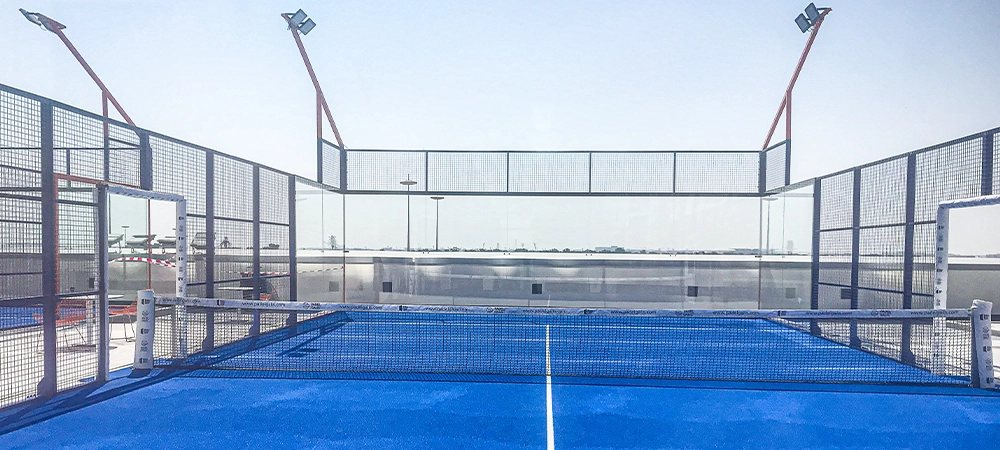
Tennis Court Surface Contractor in Ontario
The dimensions of tennis courts vary significantly from those of other popular racket sports such as badminton, squash, and racquetball. These variations are crucial in shaping each sport’s unique characteristics, from the court’s size to the net’s height and surrounding walls.
Understanding these differences enhances appreciation for the diversity within racket sports. It also underscores the importance of adapting strategies to suit the unique dimensions of each court.
Whether you prefer the agility of badminton or the intensity of squash, if you want to lay a tennis court in Ontario, Crowall Surface Contractors is your best bet. We offer tennis court surface installations and maintenance. We’re also your go-to for other surface installations, such as basketball, pickleball, and golf.
Reach out to us at 1-416-951-4626 today to get a free quote.

